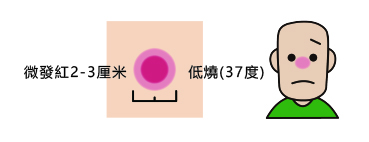Side Effects
A Notable Breakthrough in Treatment: Immunotherapy
Immunotherapy is a relatively advanced treatment approach that harnesses or bolsters the patient’s own immune system to combat cancer cells. Since a patient’s immune cells can naturally identify and destroy problematic cells, immunotherapy has been viewed as a highly promising breakthrough in cancer care.
Nonetheless, cancer cells sometimes evolve mechanisms that evade or suppress immune cell attacks. The core principle of immunotherapy, therefore, is to reactivate or reinforce the patient’s defense system. By doing so, the therapy aims to eliminate cancer cells and maintain the patient’s quality of life.
Types of Immunotherapy
Medication-Based Immunotherapy
By inhibiting cancer cells’ defensive mechanisms, these drugs empower immune cells to more effectively attack cancer cells. Common examples include PD-1/PD-L1 inhibitors and CTLA-4 inhibitors.
Cellular Immunotherapy
This approach involves collecting a patient’s immune cells, multiplying and activating them in vitro, then reintroducing them to the body to directly target cancer cells. Common methods include:
1. Dendritic Cell (DC) Therapy
2. Lymphokine-Activated Killer (LAK) cell Therapy
Advantages of Immunotherapy
Immunotherapy fills gaps left by conventional chemotherapy and radiotherapy. Its notable benefits include:
1. Improved Long-Term Survival
It can destroy multiple tumor types and, in many cases, prevent recurrences.
2. Prevents Metastasis
A strengthened immune system continues to fight cancer cells even after therapy concludes.
3. Milder Side Effects
On average, it entails fewer side effects than those typically associated with more traditional treatments (e.g., chemotherapy).
4. No Drug Resistance
By mobilizing the patient’s own immune system, immunotherapy maintains the ability to combat cancer cells without diminished efficacy over time.
5. Reduced Damage to Healthy Cells
Unlike conventional treatments, which often harm normal tissues, immunotherapy targets mainly abnormal cells.
6. Personalized Treatment
Immunotherapy can be customized around a patient’s unique immune profile, improving both effectiveness and safety.
As a new therapeutic method, immunotherapy complements conventional treatments, offering renewed hope with markedly less severe side effects.

Side Effects of Immunotherapy
Although immunotherapy generally has fewer side effects, medication-based immunotherapy may still produce some discomfort. Common mild reactions include:
1. Overactive Immune Response
Low-grade fever, fatigue, and muscle aches—usually transient and resolving quickly.
2. Minor Gastrointestinal Upset
Diarrhea, nausea, or decreased appetite, all of which often subside within a short period.
3. Liver Function Fluctuations
Some therapies may temporarily elevate liver enzymes. However, with medical oversight, these levels typically stabilize.
4. Skin Reactions
Itching, mild rashes, or dryness. These can be managed with proper skincare and doctor-prescribed medications.
Most immunotherapy-related side effects are mild. With timely communication, patients and medical teams can manage them through temporary treatment pauses, supportive medications, or minor therapy adjustments.
Dr. Yoichi Kato: Advancing Safer Immunocellular Therapies
At the Shin-Yokohama Kato Clinic in Japan, Dr. Yoichi Kato applies advanced techniques such as DC therapy and LAK cell therapy, enabling many late-stage patients to achieve notable outcomes. When reinfused into the patient, ex vivo expanded immune cells do not adversely affect normal tissues, thus minimizing side effects.
Typical side effects from Dr. Kato’s immunotherapies may include:
1. Low-Grade Fever
A normal immune response that usually subsides quickly.
2. Localized Redness at the Injection Site
A mild irritation that often diminishes within a short time.
3. Transient Immune Responses
Muscle aches, fatigue, and other mild symptoms that typically resolve within a few days.

Because these approaches use the patient’s own immune cells to precisely target tumors, the side effects of immunotherapy are noticeably lower than those of traditional treatments. This higher degree of personalization also helps patients regain quality of life and confidence in the future.

Shin-Yokohama Kato Clinic
Potential Side Effects of Other Types of Immunotherapies
Though less common, the following organs and systems can sometimes be affected, warranting vigilant monitoring during treatment:
1. Skin
Allergic reactions, redness, itching, blistering, or dryness.
2. Liver and Gastrointestinal Tract
Elevated liver enzymes, jaundice, abdominal pain, vomiting, or diarrhea. Severe cases require immediate medical attention.
3. Lungs and Respiratory Tract
Possible inflammation leading to coughing, shortness of breath, or chest tightness.
4. Thyroid and Endocrine System
Thyroid dysfunctions manifesting as weight changes, increased heart rate, or hair loss.
5. Brain and Nervous System
Neuropathy, headaches, sensory changes, high fever, or behavioral shifts.
6. Heart and Cardiovascular System
Irregular heartbeat or myocarditis. Alert your doctor immediately upon these symptoms.
7. Joints
Arthritis-like pain, swelling, or limited mobility.
Regardless of the severity, any unusual symptoms or concerns during treatment should be promptly reported to the medical team.
Managing Immunotherapy Side Effects
1. Timely Communication
Even mild muscle pains or more prominent breathing difficulties require prompt reporting. Avoid self-prescribing or discontinuing treatment without professional guidance.
2. Therapy Adjustments
Depending on your response, your physician may lower the dosage, pause treatment, or recommend alternative approaches to maintain a sensible balance between tumor suppression and side effect management.
3. Supportive Medications
Under medical supervision, drugs such as steroids or immunosuppressants may alleviate excessive immune reactions.
4. Lifestyle and Self-Care
Adequate rest, a balanced diet, moderate exercise, and stress management encourage immune recovery and help minimize side effects.


